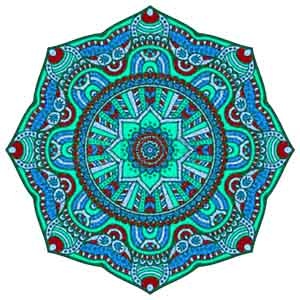
This article will discuss some of the pros and cons of painting over wallpaper when it comes to decorating your home. There it is, the house of your dreams! As you roll into the driveway you couldn’t imagine a greater place to live. Serene woods, a lovely home with incredible curb appeal, and best of all it is just the right price. As you walk into the home you are very satisfied with the layout of the rooms, etc. But you hesitate for a moment and notice the ugly country bumpkin wallpaper. The walls are plastered with country hearts and apples in baskets accompanied by a border with a farmer pushing a cart of fruit. Each and every room in the house has some type of wallpaper with a country motif. At this point you become very dissatisfied and the home does not appeal to you in the same sense as it had from the outside. The good news is, there are alternatives to removing the unwanted wallpaper and can be much less time consuming.
Wallpaper can be painted over it treated properly and you follow the correct procedure. Because wallpaper is water permeable it is very important that the walls are prepared prior to painting. Follow these procedures prior to painting:
1. Carefully observe the every inch of the paper for peeling seams, rips or tears.
2. Repair any seam that may be peeling by gluing the edges back into place with wallpaper glue.
3. Use spackle or drywall mud to fill in any areas that may be unlevel due to rips or tears.
4. Ensure that the wall is clean and free of any foreign substance.
Once the above procedure are completed you are ready to prime the wall. It is very important that the wall is primed with an oil based primer. Oil based primers will not soak through the paper causing it to peel. If a water based paint is used the wallpaper will begin to bubble and peel. After the entire wall has been primed with an oil based coating, you should observe the wall again for any unwanted texture, seams, or unlevel surfaces. These should be repaired before proceeding to paint. Texture and unlevel surfaces need to be filled in again with spackle or drywall mud and unwanted seams again should be glued down.
Get ready to paint. Choose the color you wish for your wall to be. Again, an oil based paint is suggested as an extra barrier. If you choose you can also use a water based paint, but if you have any exposed areas that have not been covered with oil based primer or an open seam, then you will experience bubbling and the wallpaper will peel.
After you are finished painting you can stand back and look at the beautiful room that once was plastered with undesirable wallpaper.
Pros to painting over wallpaper versus removing wallpaper include:
1. Less time consuming. Removing wallpaper can be very difficult. It is suggested that in order to remove wallpaper one should steam the area, perforate the area, steam the area again, perforate the paper for a second time, spray the entire wall with fabric softener, perforate the wall for a third time and then begin peeling the paper. This is a very time consuming process and still does not ensure that you will not run into issues such as the paper sticking to the drywall and pulling the drywall paper off leaving the surface uneven.
2. Trim does not have to be removed if it covers over wallpaper. Just ensure that you have a good tool to paint close to all trim.
Cons to painting versus removing wallpaper include:
1. More expensive process. The cost of oil based paints are much higher than water based paints.
2. Hazardous fumes. You will need to open a window and make sure you have proper ventilation if you are using oil based primers and paints. The fumes created can be hazardous.
3. Cleanup difficult. Oil based paints and primers are much more difficult to clean up. Water based paints are very soluble in water and clean much more easily.
Regardless if you choose to paint over wallpaper or remove the wallpaper all together, you have a task ahead of you. Be prepared to spend time with either process. Good luck and happy painting.
Thank you for reading this article! If you have any further questions about this topic please contact us.
